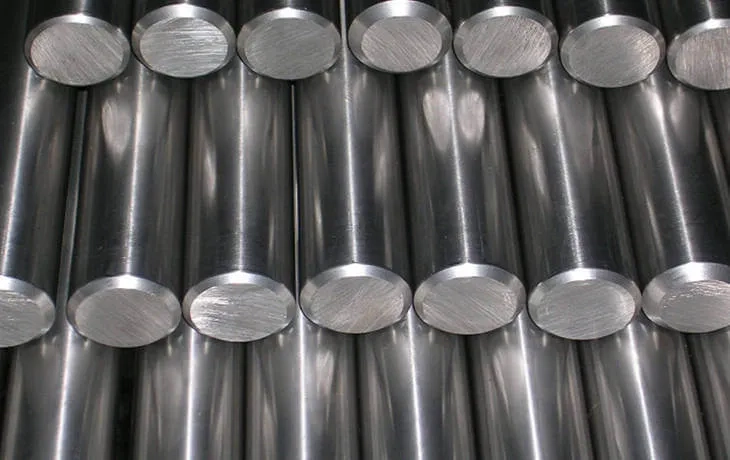Inconel 718 is one of the most resilient and high-performance alloys in industrial manufacturing today, but it is also among the most difficult materials to machine. Its ability to maintain strength and resist corrosion in high-temperature and high-stress environments makes it ideal for aerospace, nuclear, and oil & gas components. However, those same properties pose challenges for machinists unfamiliar with this nickel-based superalloy. For those stepping into this demanding territory, machining inconel 718? A Beginner’s Guide provides the practical insights and technical strategies needed to overcome these hurdles with confidence.
What Is Inconel 718?
Inconel 718 is a precipitation-hardenable nickel-chromium alloy that includes iron, niobium, molybdenum, and titanium. It is specifically designed for high strength and excellent corrosion resistance at temperatures up to 1300°F (704°C). These properties make it ideal for:
- Jet engine components
- Gas turbine blades
- Nuclear reactor parts
- High-temperature fasteners and springs
- Oil and gas drilling tools
Its widespread use in extreme applications is a testament to its engineering value. Yet its machinability is a different story.
Why Is Inconel 718 So Hard to Machine?
Machining Inconel 718 requires advanced strategies and specialized tooling because of its:
1. Work Hardening Behavior
As it is cut, Inconel 718 rapidly hardens at the cutting zone. This work-hardened surface increases cutting resistance for subsequent passes, accelerating tool wear and reducing productivity.
2. Low Thermal Conductivity
Heat generated during cutting isn’t effectively dissipated. Most of the thermal load remains near the tool tip, causing faster thermal degradation and shortening tool life.
3. High Strength at Elevated Temperatures
Even under high thermal conditions, the material retains most of its strength. This results in higher forces on tools, leading to deformation or chipping if tools are not optimized.
4. Carbide Precipitation
Inconel 718 contains hard carbide particles which act as abrasives, especially during prolonged cutting, and damage tool edges quickly.
Key Considerations Before Machining Inconel 718
Choose Rigid Equipment
Vibration or deflection can instantly compromise your cutting process. Use a high-torque, rigid CNC machine to maintain precision and control.
Workholding Strategy
Ensure strong and stable workholding. The forces required to machine Inconel 718 are higher than those for softer metals, so any movement can compromise tolerances and surface finish.
Tooling Recommendations
Tool Material:
- Carbide Inserts (with TiAlN or AlTiN coating): Ideal for both roughing and finishing.
- Ceramic Tools: Can be used for finishing, especially at higher cutting speeds.
- CBN Tools: Less commonly used but viable for certain applications with low interruption.
Tool Geometry:
- Sharp cutting edges reduce work hardening.
- High positive rake angles decrease cutting forces.
- Reinforced tool edges resist chipping and fatigue.
Optimal Machining Parameters
Careful optimization of speeds, feeds, and depths is essential for tool longevity and quality surface finishes.
Turning:
- Speed: 20–30 m/min
- Feed: 0.15–0.25 mm/rev
- Depth of Cut: 1.0–2.5 mm (roughing); 0.3–0.5 mm (finishing)
Milling:
- Speed: 25–40 m/min
- Feed per Tooth: 0.05–0.12 mm
- Axial Depth: 1–2 mm
- Radial Engagement: 30–40%
Monitor tool wear and chip evacuation frequently during operations and adjust parameters as needed.
Cooling and Chip Management
High-Pressure Coolant (HPC)
To combat the heat concentration typical of Inconel machining, use high-pressure coolant systems—preferably through-tool coolant delivery. This improves chip evacuation and reduces tool degradation.
Chip Breakers
Use inserts with specialized chip breakers to manage chip morphology. Long, continuous chips can damage tools and surfaces, while broken chips improve process stability.
Drilling and Tapping Techniques
Drilling:
- Use carbide drills with split points for better centering and reduced deflection.
- Consider peck drilling cycles to prevent chip clogging and heat accumulation.
- Avoid high RPMs; instead, prioritize feed and dwell control.
Tapping:
- Use thread-forming taps instead of cutting taps where possible.
- Apply cutting fluids with high lubricity designed for nickel alloys.
- Keep tapping speeds low and consistent to avoid breakage.
Surface Finishing Techniques
Achieving precision surfaces in Inconel 718 demands high attention to finishing:
- Grinding: Use vitrified bonded wheels with ceramic abrasives.
- Polishing: Diamond-based pastes and fine-grain abrasives can help achieve Ra values below 0.4 µm.
- Deburring: Mechanical deburring is more effective due to the hardness of the material.
Heat Treatment Compatibility
Many components machined from Inconel 718 require solution annealing and age hardening after the machining process. Allow for:
- Dimensional changes during post-processing.
- Final finishing after heat treatment to ensure tolerances.
Plan the machining workflow accordingly to avoid distortion or rework.
CAM Software and Simulation
Using modern CAM software helps in:
- Toolpath optimization
- Tool engagement analysis
- Predicting heat zones
- Preventing collision or deflection
Simulations provide an added layer of protection, especially when machining high-cost materials like Inconel 718.
Cost-Saving Machining Tips
- Standardize Tooling – Use a unified tool library to minimize inventory and streamline setup.
- Use Tool Life Monitoring – Real-time wear sensors can prevent catastrophic tool failure.
- Batch Runs – Group similar jobs to reduce cycle time and material waste.
- Partner with Experienced Vendors – For large-volume production, work with facilities that specialize in Inconel 718.
Industries Benefiting from Inconel 718 Machining
- Aerospace: Turbine disks, engine components, exhaust nozzles
- Oil & Gas: Valves, downhole tools, pumps
- Power Generation: Nuclear fuel rods, containment parts
- Defense: Structural brackets, missile components
Each industry relies on the precision and strength of Inconel 718, making its proper machining critical to mission success.
Final Thoughts
Machining Inconel 718 is a specialized task requiring knowledge, patience, and the right tools. While its thermal and mechanical strength present difficulties, the long-term value of mastering its machinability is significant. For machine shops aiming to expand their high-performance material capabilities, starting with a sound understanding of Inconel 718's challenges—and how to overcome them—is the first step toward competitive excellence.


